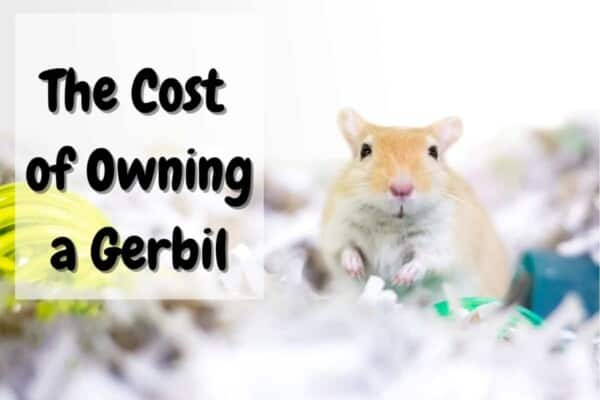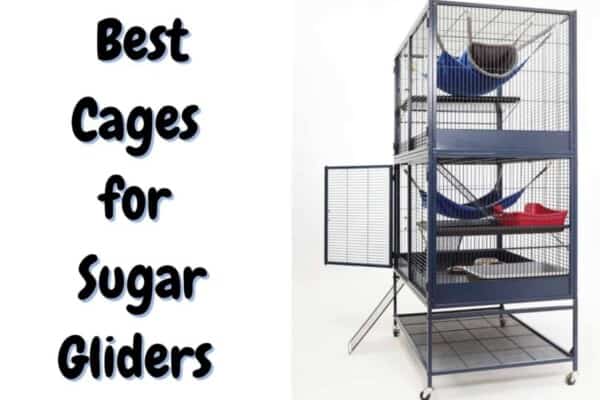When ferret-proofing your house, you need to block off any escape routes, lock away or hide anything that could be dangerous for your ferret to get into, and safeguard any potentially dangerous furniture and appliances. In this article, we are going to take a look at the specific things that you should do to ensure that your living room, bedroom, bathroom, and kitchen are all safe for your ferret companions.
Why Is It Necessary To Ferret Proof A House?
Ferrets are very intelligent and inquisitive creatures, which makes them really fun pets, but it also means that they can get into trouble quite easily. They love to climb, jump, squeeze through tight holes, hide things they find, and eat things they shouldn’t. If you are going to bring home a new pet ferret, you are going to need to ferret-proof any rooms that they have access to in order to protect both your ferret and your things.
How To Ferret-Proof Your Bedroom
1. Ferret-Proof Your Box Spring
The fabric underneath your box spring is likely extremely thin, which means that your ferret could easily rip the bottom open and climb up inside the bed. Once your ferret is inside, you pretty much just have to wait until they climb back out. In order to prevent your ferret from destroying your box spring, you will want to take a fitted sheet and place it upside down on the box spring. Your ferret will not be able to rip through the fitted sheet nearly as easily as it could rip through the box spring fabric.
2. Ferret-Proof Your Night Stand
There are likely lots of items inside your nightstand that could be dangerous to your ferret, including medications, essential oils, and anything your ferret might chew on, such as things made out of silicone or rubber. It is better to keep any of these things up high on a shelf or in cabinets to ensure that your ferret does not have access to them.
You will also not want to place anything valuable or breakable on top of the nightstand. Ferrets love to knock things over and steal valuable items to hide them in places that you will never think to look.
3. Ferret-Proof Your Dresser
Ferrets love to climb into dresser drawers and roll around in the fabric inside. Unfortunately, if your ferret does climb inside the dresser, he could end up behind one of the drawers and get squished or injured. The best way to avoid this is to make sure that the drawers in your dresser are closed at all times.
4. Keep Any Plants Up High
Your ferret will love to dig around in any pots that he can get his hands on, which can create quite a mess, and some soils and plants are even toxic for ferrets. Because of this, it is better to keep all house plants up and out of reach.
You will also want to do your research before bringing home any new house plants to ensure that you know which ones are safe for your ferrets and which ones are toxic.
5. Avoid Clothing Piles
As mentioned in the section about ferret proofing your dresser, ferrets love curling up and taking a nap inside clothes. If you have any clothes piles scattered around your room, your ferret will inevitably crawl into one, and if you are not careful, you could end up stepping on him.
There are a couple of things that you can do to prevent this problem. First, you could learn to carefully avoid all clothing piles when walking around. Second, you could eliminate clothing piles altogether by making sure you always put clothes in a hamper or basket. You will also want to make sure no ferrets are hiding inside your clothes before you do laundry.
How To Ferret-Proof Your Living Room
6. Ferret Proof Your Couch
Ferrets will squeeze under or into pretty much any small space that you give them access to, including under your couch. While this may seem harmless, once your ferret is under the couch, he will be able to rip through the thin fabric on the bottom and crawl up into it. This is dangerous for a couple of different reasons.
First, once your ferret is inside, he could eat the foam and get an intestinal obstruction which could require surgery to deal with. Additionally, if your ferret is inside the couch, you could accidentally sit down and squish your ferret without realizing it.
When it comes to ferret-proofing your couch, there are two main things that you can do. First, you could remove the feet from your couch so that your couch sits directly on the floor. When your couch is on the floor, your ferret will obviously not be able to crawl under or up into it. The second option is to get a couch that is high enough off the ground that your ferret has no interest in spending much time underneath it.
7. Get Rid Of Reclining Furniture
Perhaps the most dangerous pieces of furniture for your ferret in your home are any reclining chairs or mechanical furniture you have. Ferrets absolutely love climbing up in the gears, springs, wires, etc., but they are all major hazards. Your ferret could get caught, chew something they are not supposed to, or if you open up the chair while the ferret is inside, you could accidentally injure him severely.
Unfortunately, there is no great way to ensure that reclining or mechanical furniture is safe for your ferret. Because of this, the safest option for your ferrets is to get rid of the reclining and mechanical furniture altogether.
8. Rearrange Your Climbable Furniture
Ferrets like to climb and jump all over furniture just like cats do, but they are neither as agile nor as graceful as cats. In fact, most ferrets are quite clumsy, but this will not prevent them from climbing up high or making daunting jumps which could result in them falling down and injuring themselves.
When you are looking around your living room, you want to look for potential pathways that your ferret could use to climb up to high. You should move around furniture and decorations to break up any pathways you notice. Naturally, your ferret may find pathways that you did not think of, so when that happens, you can just continue to rearrange things until you figure out how to block off or get rid of all of the potentially dangerous climbing pathways.
In addition to blocking off pathways that allow your ferret to climb up too high, you want to move all climbable furniture away from windows. If your ferret is able to climb up to a window, he could potentially get out and escape into the yard or beyond. The fact that there are wild ferrets does not mean that your domesticated ferret will be able to survive long outside.
9. Regularly Check Your Ferret’s Stashes
Ferrets instinctually collect toys, food, and other objects to store them all together under furniture or in hiding places. You will want to regularly check underneath the furniture in your room to ensure that your ferret has not stashed anything that you would rather him not have or that could be dangerous. If you are unable to find your ferret’s stash, you can give him an object that you know he likes to stash. He will most likely take it right to his hiding place, so all you will have to do is follow him there.
10. Secure HVAC Vents
It is probable that you have at least one, if not more, HVAC vents on or near the ground. These vents can be extremely dangerous for your ferret if he is able to prop one open and crawl inside. In order to prevent this from happening, you want to make sure that all of the vents are securely closed. If you can easily pull one open, it is safest to assume that your ferret might be able to as well.
11. Block Off Your Fireplaces
Fireplaces are dangerous for all household pets, but your ferrets will likely be especially interested in climbing inside and digging around in the ash and sand. Some ferrets even turn fireplaces into beds and sleep inside. To protect your ferret, you want to keep the fireplace securely blocked off at all times. Additionally, you want to do a headcount before you turn on your fireplace to make sure all of your ferrets are accounted for.
How To Ferret-Proof Your Bathroom
12. Remove or Lock Up Any Chemicals
People often keep cleaning chemicals inside their bathroom cabinets. If you do store cleaning products in your bathroom, you will either want to remove them from low cabinets to make sure they are up high where your ferret cannot reach them, or you need to lock them up with a close-fit child lock.
13. Ferret-Proof Your Toilet
There are two main things that you need to do to ferret-proof your toilet. First, you need to move the plunger and scrubber brush up high or lock them up because your ferrets will love to chew on them, which is both gross and dangerous. You will also want to put a child lock on your toilet and make sure the seat is always closed. If you don’t, your ferret could climb inside, get stuck, and drown.
14. Never Leave A Full Bathtub Unattended
If you have ever placed your ferret in the bathtub, you will notice that they struggle to climb back out. For this reason, you never want to leave a tub full of water unattended because your ferret could get stuck and drown. If you absolutely have to leave a full tub unattended, you should make sure all your ferrets are securely locked up in their enclosures first.
How To Ferret-Proof Your Kitchen
15. Block Off Your Kitchen Entirely
There are a lot of different dangers for your ferret in the kitchen, so if at all possible, it is better to block off your kitchen entirely. The easiest way to do this is with some sort of gate. Metal gates will always be better than plastic gates, as your ferret might be able to chew through the plastic.
16. Ferret-Proof Toe Kicks
If you look underneath your kitchen cabinets, you will likely see several small holes that lead up to a small space in between your cabinets. Your ferret will absolutely love crawling up into these spaces; however, once he does, he will likely get stuck, and you will find it nearly impossible to get to him. You will want to locate all of these holes and block them off with glue and small pieces of wood.
17. Ferret-Proof Any Cabinets and Drawers
To ferret-proof your kitchen counters and drawers, you are going to first want to locate and move any toxic or dangerous items up to higher cabinets. You will also want to use child locks to prevent your ferrets from getting inside the cabinets or drawers. They will need to be close-fit locks, or else your ferret will still be able to slip through.
18. Ferret-Proof Your Appliances
For your fridge, the main thing that you want to ensure is that your ferret cannot crawl underneath or behind the fridge where he could get stuck or injured by mechanical parts. To decrease the space underneath the fridge, you can unscrew the feet. You will also want to make sure the fridge is snug against the wall or wedge something in the gap to prevent your ferret from crawling behind or beside it.
Next, you want to ferret-proof your oven. Just like your fridge, you can prevent your ferret from crawling underneath by lowering the feet. You will also want to do a ferret role call every time before you turn on your oven.
Finally, your dishwasher can be rather dangerous for your ferret. There is no great way to ferret-proof your dishwasher, but you will want to make sure all of your ferrets are accounted for before you ever start a load. You also want to double-check that no ferrets are inside before closing the door.













